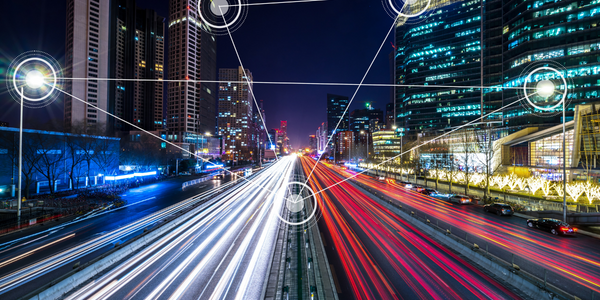下载PDF
Developing a Smart City of the Future: The Case of Port City Takeshiba

技术
- 分析与建模 - 实时分析
- 应用基础设施与中间件 - 事件驱动型应用
适用行业
- 城市与自治市
- 运输
适用功能
- 产品研发
- 质量保证
用例
- 实时定位系统 (RTLS)
- 智慧城市运营
服务
- 系统集成
- 测试与认证
挑战
作为全球领先的电信公司,软银一直在寻找创新的新方式来拓展业务并更好地为客户服务。随着物联网传感器和连接设备在几乎所有行业中的普及,软银知道他们需要一种方法来快速有效地开发实时应用程序,以利用前沿技术并解决日常城市生活的痛点。
SoftBank 在日本东京中心的 Port City Takeshiba 创建了这个真实的沙盒,并将其命名为新的全球总部所在地。
为了成功协调所有这些不同的城市系统,并为竹芝的员工和访客提供无缝体验,软银需要一种可靠的方式来开发和部署实时智慧城市应用程序。
客户
软银
关于客户
软银集团公司是一家日本跨国集团控股公司,总部位于东京港区,专注于投资管理。集团主要投资于技术、能源和金融领域的公司。
解决方案
为了有效整合如此多不同的系统并构建他们的智慧城市,软银需要一个编排平台来管理大量传入的流数据并整合如此多的不同技术。为保证竹芝项目的成功,选择了Vantiq的实时事件驱动应用开发平台;以下是其中的几个关键原因:
- 实时数据集成
- 与智慧城市系统的无缝交互
- 边缘计算以遏制延迟和安全问题
运营影响
相关案例.

Case Study
Turning A Stadium Into A Smart Building
Honeywell created what it called the “intelligent system” for the National Stadium in Beijing, China, turning the venue for the opening and closing events at the 2008 Summer Olympics into a “smart building.” Designed by highly controversial artist Ai Weiwei, the “Bird’s Nest” remains one of the most impressive feats of stadium architecture in the world. The 250,000 square meter structure housed more than 100,000 athletes and spectators at a time. To accommodate such capacity, China turned to Honeywell’s EBI Integrated Building Management System to create an integrated “intelligent system” for improved building security, safety and energy efficiency.
.png)
Case Study
Smart Street Light Network (Copenhagen)
Key stakeholders are taking a comprehensive approach to rethinking smart city innovation. City leaders have collaborated through partnerships involving government, research institutions and solution providers. The Copenhagen Solutions Lab is one of the leading organizations at the forefront of this movement. By bringing together manufacturers with municipal buyers, the Copenhagen Solutions Lab has catalyzed the development and deployment of next-generation smart city innovations. Copenhagen is leveraging this unique approach to accelerate the implementation of smart city solutions. One of the primary focus areas is LED street lighting.

Case Study
Airport SCADA Systems Improve Service Levels
Modern airports are one of the busiest environments on Earth and rely on process automation equipment to ensure service operators achieve their KPIs. Increasingly airport SCADA systems are being used to control all aspects of the operation and associated facilities. This is because unplanned system downtime can cost dearly, both in terms of reduced revenues and the associated loss of customer satisfaction due to inevitable travel inconvenience and disruption.

Case Study
IoT-based Fleet Intelligence Innovation
Speed to market is precious for DRVR, a rapidly growing start-up company. With a business model dependent on reliable mobile data, managers were spending their lives trying to negotiate data roaming deals with mobile network operators in different countries. And, even then, service quality was a constant concern.

Case Study
Buoy Status Monitoring with LoRa
The Netherlands are well-known for their inland waterways, canals, sluices and of course port activities. The Dutch Ministry of Infrastructure indicates that there are thousands of buoys and fixed items in and near water environments that would profit from IoT monitoring. One of the problems with buoys for example, is that they get hit by ships and the anchor cable breaks. Without connectivity, it takes quite some time to find out that something has happened with that buoy. Not to mention the costs of renting a boat to go to the buoy to fix it. Another important issue, is that there is no real-time monitoring of the buoys at this moment. Only by physically visiting the object on the water, one gains insight in its status.






